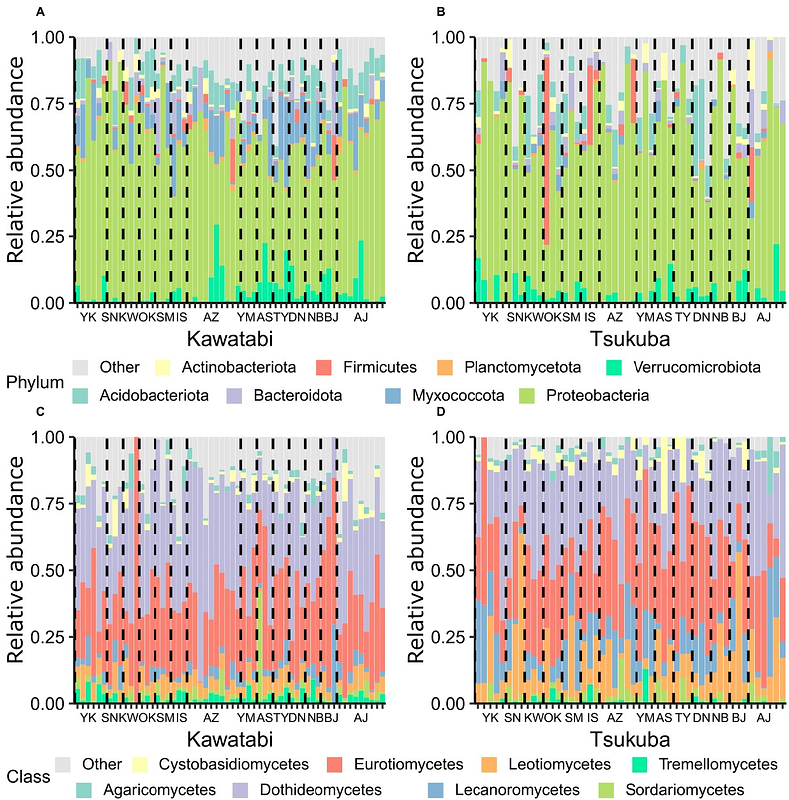Common garden experiments suggest terpene-mediated interactions between phyllosphere microbes and Cryptomeria japonica

Common garden experiments suggest terpene-mediated interactions between phyllosphere microbes and Cryptomeria japonica
Ishizaki, S.; Kohyama, T. I.; Ota, Y.; Saito, T.; Suyama, Y.; Tsumura, Y.; Hiura, T.
AbstractPlant-microbe interactions in the phyllosphere provide invaluable information on plant ecology, with implications for ecosystem functioning and plant-atmosphere feedbacks. The composition of phyllosphere microbial communities varies significantly depending on host lineages, geographic regions, and climatic conditions. However, the factors driving these variations in interactions with plants remain poorly understood. Biogenic volatile organic compounds (BVOCs) emitted by plants may be important in these interactions. Here, we quantified the composition of phyllosphere microbial communities and terpene emissions from leaves of Japanese cedar (Cryptomeria japonica) trees grown in two common gardens from cuttings collected from natural populations across Japan. Amplicon sequencing revealed that bacterial and fungal communities differed significantly between gardens and among host population origins. Analysis of BVOC profiles showed that the camphene emission rate was associated with bacterial community composition, whereas that of {beta}-farnesene was linked to fungal community composition. The relative abundances of certain putative plant pathogens and the emission rates of most monoterpenes were correlated with the climatic conditions at the origin sites of cedar trees. These findings highlight the intricate relationships between phyllosphere microbial communities and terpene emission from host trees and suggest the role of climatic factors in shaping these interactions.